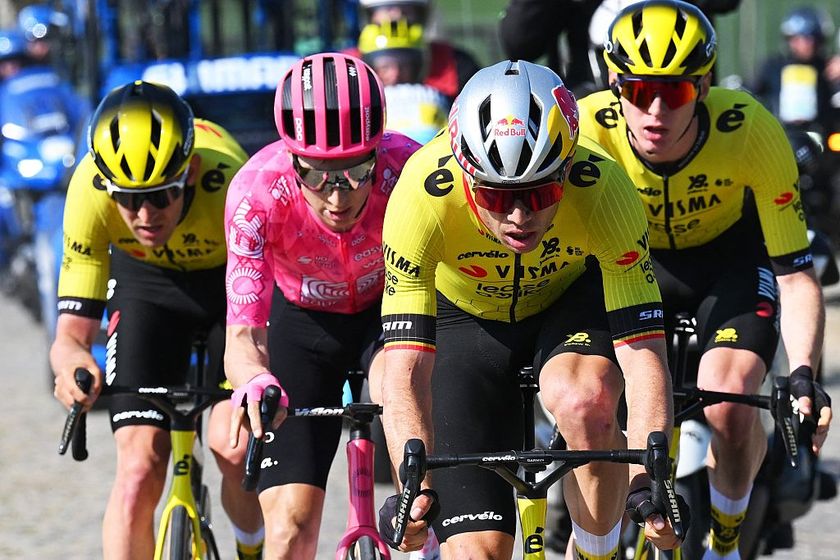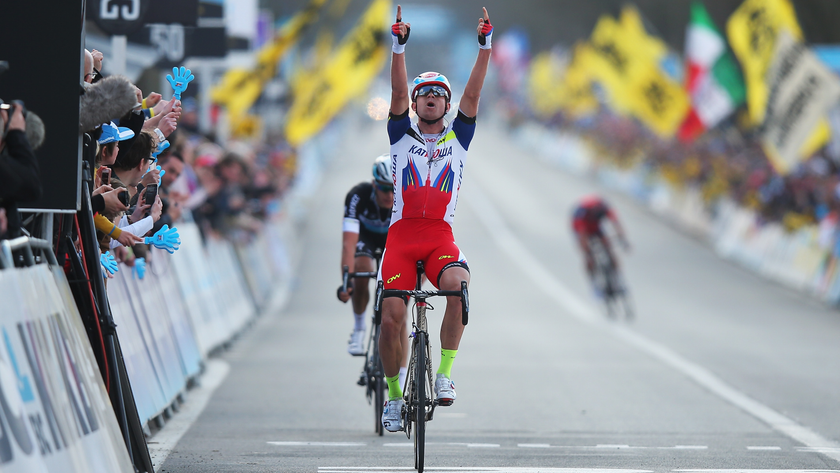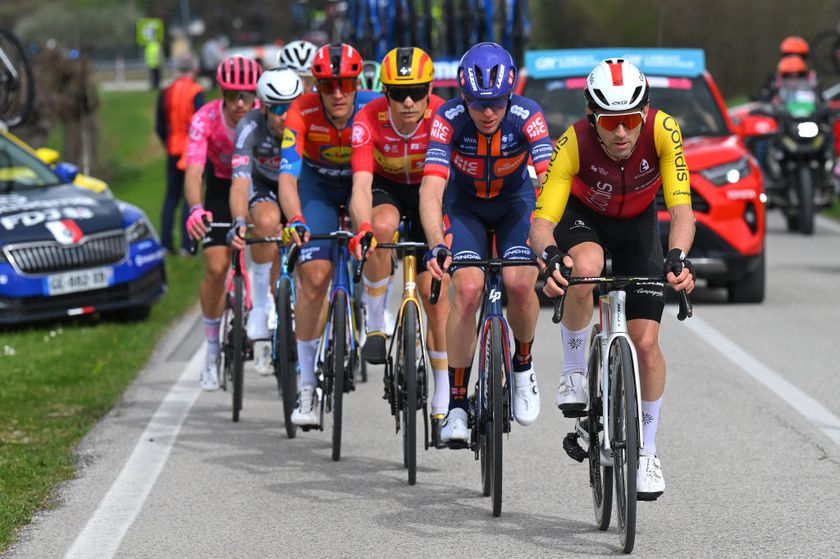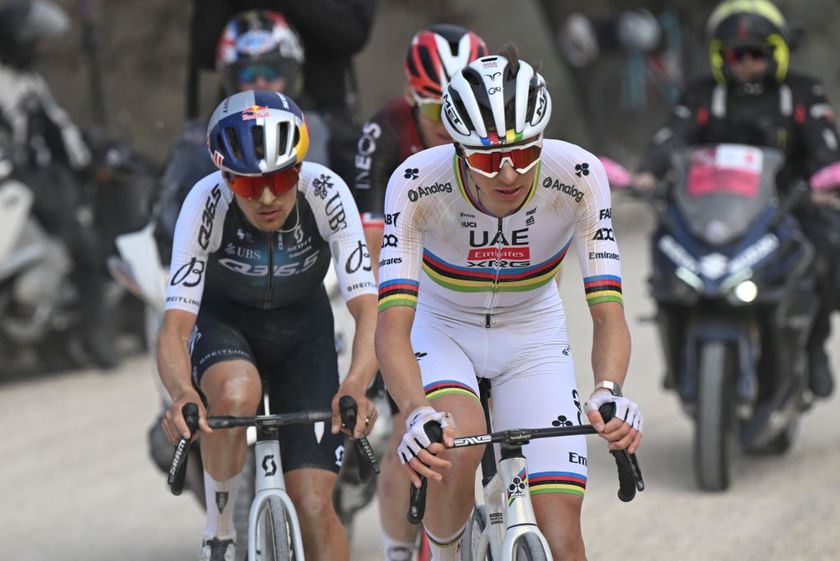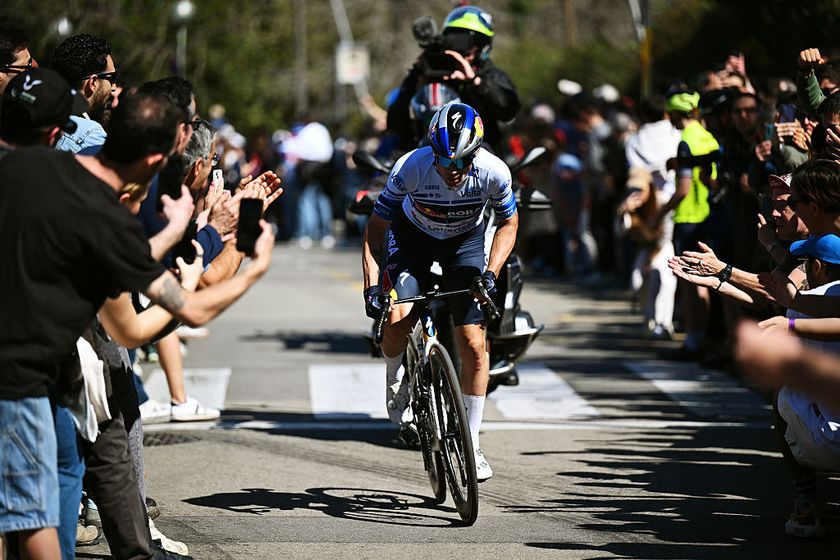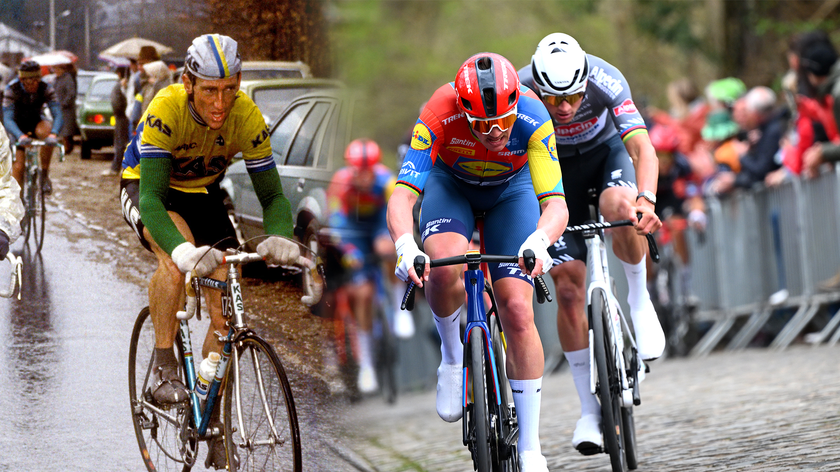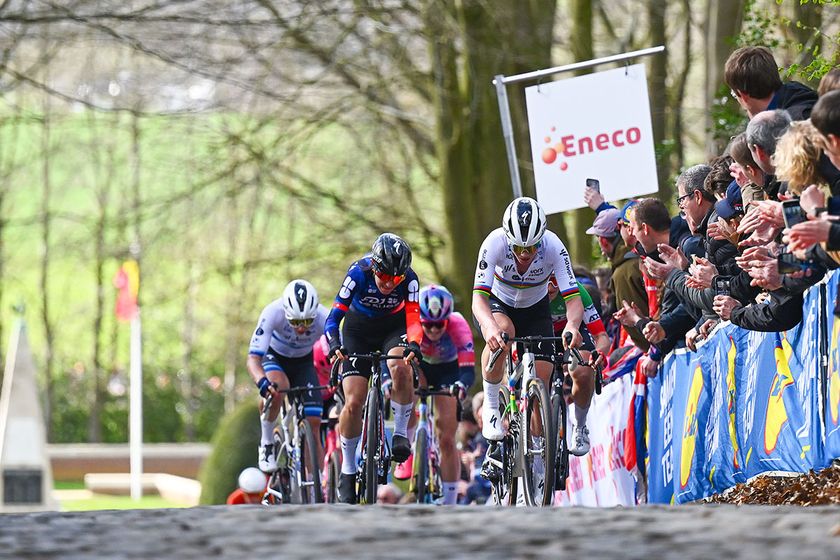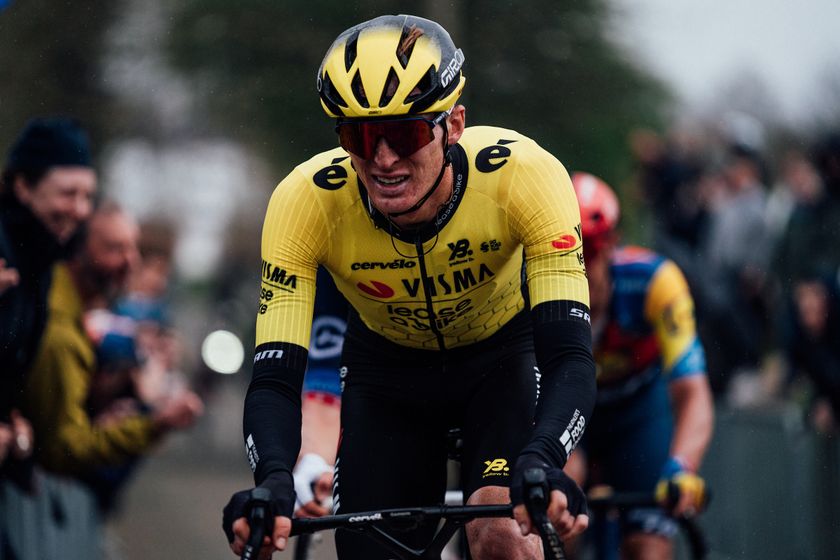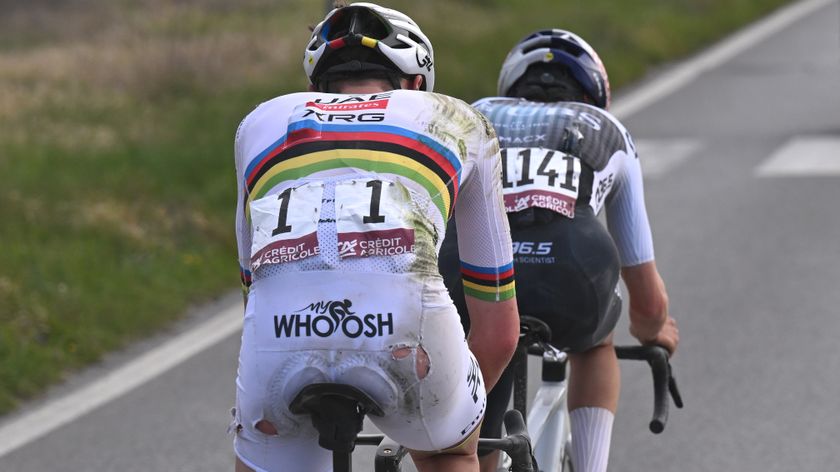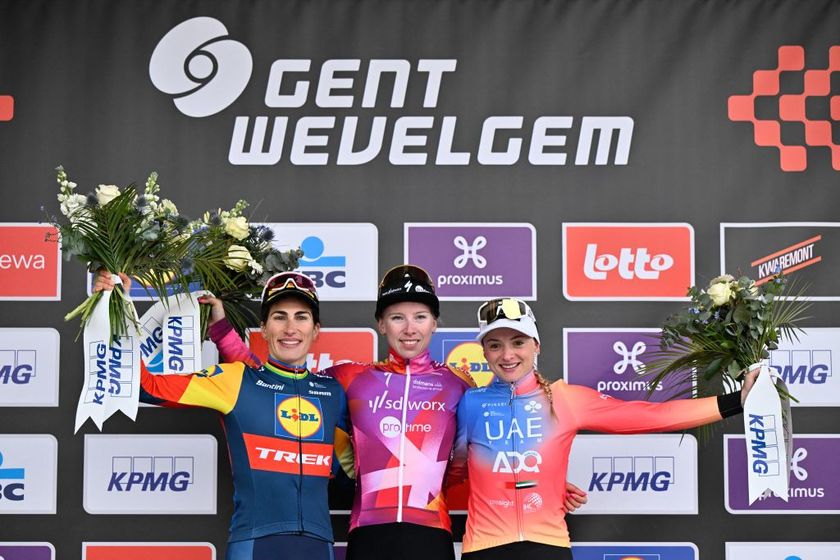Fitness questions and answers for May 23, 2005
Got a question about fitness, training, recovery from injury or a related subject? Drop us a line at...
Form & Fitness Q & A
Got a question about fitness, training, recovery from injury or a related subject? Drop us a line at fitness@cyclingnews.com. Please include as much information about yourself as possible, including your age, sex, and type of racing or riding. Due to the volume of questions we receive, we regret that we are unable to answer them all.
Carrie Cheadle, MA (www.carriecheadle.com) is a Sports Psychology consultant who has dedicated her career to helping athletes of all ages and abilities perform to their potential. Carrie specialises in working with cyclists, in disciplines ranging from track racing to mountain biking. She holds a bachelors degree in Psychology from Sonoma State University as well as a masters degree in Sport Psychology from John F. Kennedy University.
Dave Palese (www.davepalese.com) is a USA Cycling licensed coach and masters' class road racer with 16 years' race experience. He coaches racers and riders of all abilities from his home in southern Maine, USA, where he lives with his wife Sheryl, daughter Molly, and two cats, Miranda and Mu-Mu.
Kelby Bethards, MD received a Bachelor of Science in Electrical Engineering from Iowa State University (1994) before obtaining an M.D. from the University of Iowa College of Medicine in 2000. Has been a racing cyclist 'on and off' for 20 years, and when time allows, he races Cat 3 and 35+. He is a team physician for two local Ft Collins, CO, teams, and currently works Family Practice in multiple settings: rural, urgent care, inpatient and the like.
Fiona Lockhart (www.trainright.com) is a USA Cycling Expert Coach, and holds certifications from USA Weightlifting (Sports Performance Coach), the National Strength and Conditioning Association (Certified Strength and Conditioning Coach), and the National Academy for Sports Nutrition (Primary Sports Nutritionist). She is the Sports Science Editor for Carmichael Training Systems, and has been working in the strength and conditioning and endurance sports fields for over 10 years; she's also a competitive mountain biker.
Eddie Monnier (www.velo-fit.com) is a USA Cycling certified Elite Coach and a Category II racer. He holds undergraduate degrees in anthropology (with departmental honors) and philosophy from Emory University and an MBA from The Wharton School of Business.
Eddie is a proponent of training with power. He coaches cyclists (track, road and mountain bike) of all abilities and with wide ranging goals (with and without power meters). He uses internet tools to coach riders from any geography.
Get The Leadout Newsletter
The latest race content, interviews, features, reviews and expert buying guides, direct to your inbox!
David Fleckenstein, MPT (www.physiopt.com) is a physical therapist practicing in Boise, ID. His clients have included World and U.S. champions, Olympic athletes and numerous professional athletes. He received his B.S. in Biology/Genetics from Penn State and his Master's degree in Physical Therapy from Emory University. He specializes in manual medicine treatment and specific retraining of spine and joint stabilization musculature. He is a former Cat I road racer and Expert mountain biker.
Since 1986 Steve Hogg (www.cyclefitcentre.com) has owned and operated Pedal Pushers, a cycle shop specialising in rider positioning and custom bicycles. In that time he has positioned riders from all cycling disciplines and of all levels of ability with every concievable cycling problem.They include World and National champions at one end of the performance spectrum to amputees and people with disabilities at the other end.
Current riders that Steve has positioned include Davitamon-Lotto's Nick Gates, Discovery's Hayden Roulston, National Road Series champion, Jessica Ridder and National and State Time Trial champion, Peter Milostic.
Pamela Hinton has a bachelor's degree in Molecular Biology and a doctoral degree in Nutritional Sciences, both from the University of Wisconsin-Madison. She did postdoctoral training at Cornell University and is now an assistant professor of Nutritional Sciences at the University of Missouri-Columbia where she studies the effects of iron deficiency on adaptations to endurance training and the consequences of exercise-associated changes in menstrual function on bone health.
Pam was an All-American in track while at the UW. She started cycling competitively in 2003 and is the defending Missouri State Road Champion. Pam writes a nutrition column for Giana Roberge's Team Speed Queen Newsletter.
Dario Fredrick (www.wholeathlete.com) is an exercise physiologist and head coach for Whole Athlete™. He is a former category 1 & semi-pro MTB racer. Dario holds a masters degree in exercise science and a bachelors in sport psychology.
Scott Saifer (www.wenzelcoaching.com) has a Masters Degree in exercise physiology and sports psychology and has personally coached over 300 athletes of all levels in his 10 years of coaching with Wenzel Coaching.
Kendra Wenzel (www.wenzelcoaching.com) is a head coach with Wenzel Coaching with 17 years of racing and coaching experience and is coauthor of the book Bike Racing 101.
Steve Owens (www.coloradopremiertraining.com) is a USA Cycling certified coach, exercise physiologist and owner of Colorado Premier Training. Steve has worked with both the United States Olympic Committee and Guatemalan Olympic Committee as an Exercise Physiologist. He holds a B.S. in Exercise & Sports Science and currently works with multiple national champions, professionals and World Cup level cyclists.
Through his highly customized online training format, Steve and his handpicked team of coaches at Colorado Premier Training work with cyclists and multisport athletes around the world.
Brett Aitken (www.cycle2max.com) is a Sydney Olympic gold medalist. Born in Adelaide, Australia in 1971, Brett got into cycling through the cult sport of cycle speedway before crossing over into road and track racing. Since winning Olympic gold in the Madison with Scott McGrory, Brett has been working on his coaching business and his www.cycle2max.com website.
Richard Stern (www.cyclecoach.com) is Head Coach of Richard Stern Training, a Level 3 Coach with the Association of British Cycling Coaches, a Sports Scientist, and a writer. He has been professionally coaching cyclists and triathletes since 1998 at all levels from professional to recreational. He is a leading expert in coaching with power output and all power meters. Richard has been a competitive cyclist for 20 years
Andy Bloomer (www.cyclecoach.com) is an Associate Coach and sport scientist with Richard Stern Training. He is a member of the Association of British Cycling Coaches (ABCC) and a member of the British Association of Sport and Exercise Sciences (BASES). In his role as Exercise Physiologist at Staffordshire University Sports Performance Centre, he has conducted physiological testing and offered training and coaching advice to athletes from all sports for the past 4 years. Andy has been a competitive cyclist for many years.
Michael Smartt (www.cyclecoach.com) is an Associate Coach with Richard Stern Training. He holds a Masters degree in exercise physiology and is USA Cycling Expert Coach. Michael has been a competitive cyclist for over 10 years and has experience coaching road and off-road cyclists, triathletes and Paralympians.
Kim Morrow (www.elitefitcoach.com) has competed as a Professional Cyclist and Triathlete, is a certified USA Cycling Elite Coach, a 4-time U.S. Masters National Road Race Champion, and a Fitness Professional.
Her coaching group, eliteFITcoach, is based out of the Southeastern United States, although they coach athletes across North America. Kim also owns MyEnduranceCoach.com, a resource for cyclists, multisport athletes & endurance coaches around the globe, specializing in helping cycling and multisport athletes find a coach.
Leg Discrepancy
Back Pain
Injured but feeling great - why?
Sore glands
Knee pain post-crash
Caffeine
New to cycling
Bike fit and cleat adjustment
Fit with Power Cranks
Sensitive rear-end problem
Leg Discrepancy
Hello,
I am a 38yo male, 6' 165lbs. I have been racing competitively for several years now. In the past, I have always suffered from chronic knee pain on the outside of my left knee. After switching teams, our main sponsor (who is a local bike manufacturer) gave me a complete dynamic fitting. The results were impressive, but I do still get a little nagging pain in the left knee on occasion. He mentioned that when he measured the knee angles, there was a 1-2 degree difference between the two. He felt that this small difference was not enough to warrant placing shims under the cleat of the left shoe. I definitely feel as though I need to reach a little more with the left leg than I do with the right.
I always look forward to Mr. Hogg's detailed attempts at alleviating other riders' difficulties, so this is mostly directed to him (no offense to the others on the panel). Steve, in your professional opinion, would you prescribe the addition of a shim for a difference as small as 1-2 degrees? I realize that it is nearly impossible to diagnose someone over the internet, but given the results of my fitting, can you use those results to suggest a treatment for my knee pain? Thank you in advance for your reply, and again, I look forward to your responses.
Robert Moskal
Philadelphia, PA
I assume that the 1 or 2 degree difference noted was with the use of a goniometer which is a joint angle measuring tool. While they are fine if a fitter feels the need to use them, there is a margin of error in their usage and it approximates what you have been told is the difference. The bottom line is that you can feel a difference in power, control, or whatever between legs. Act on it.
Back Pain
I'm a 17 year old, 6'4" male who's experiencing lower back pain while riding. I've been riding for around 6-7 months now and haven't had this problem before. It usually occurs after around 40-50 km of riding. I don't have back pain while I'm off the bike. I have been told I have bad posture and weak back muscles; could this be a factor? What can I do to get rid of the pain in my back?
Simon Frost
Melbourne, Australia
I can't see you and can only speculate about whether your bike position plays a part in this. Given your size and youth, I suspect that any bike you own is probably too small and that is part of the picture too. You could do worse than have a talk to John Kennedy on [Melbourne local no. 9589 3399] about this. In regards to the bad posture and weak back muscles - of course they are part of the problem. Find a good Pilates class or similar and work on that aspect of your fitness. If that isn't possible for one reason or another invest 30 or 40 bucks on "Pilates for Dummies" by Ellie Herman, available in larger bookstores.
Injured but feeling great - why?
I have a couple of questions.
I have been riding/racing (on and off) for 5 years now, Cat 4 road (6', 225 lbs), sport MTB and I recently was injured in a race. 5 fractured ribs, collapsed lung, fractured scapular, torn rotator cuff muscles, whiplash, and a deep bruised hip/hip pointer. I am now getting better and took 28 days off the bike completely to allow my body to recover from the injuries. At the time of the accident I had just started my 8 week final phase(s) for my "peak race" of the year, June 5th, basically following Chris Carmichael/Joe Friel training methods.
The day of the accident I noticed that I was feeling particularly well.
After reading many comments here and in the literature, I though that when I returned to riding again that I would have (1) Lost endurance, both aerobic and anaerobic and (2) and for a lack of a better term have "dead legs" and feel horrible. Oh, one other thing, in the past few years, I have had my hematocrit tested on several occasions and it hovers between 47-48.5, however after my accident it was measured at 45. All other blood indicators were normal and I was not dehydrated when the blood samples were taken.
Well, my first ride in 28 days was our team training ride (~2:20) and I felt great. My legs felt incredible, my body (excluding my ribs and shoulders) felt like I had not missed a day of training! My HR was slightly elevated compared to similar efforts 28 days prior. My pace was approximately the same as previous rides. I am sure that overall my endurance has decreased compared to 28 days ago, but my question is why did I feel good? I am not complaining but there has to be some physiological reason behind this. I can honestly say that my legs have not felt this good in a long, long time and I have been training on the Carmichael/Friel type stuff for four years.
Just interested in your opinions as to why this is the case, and is there some lesson for me in my future training (i.e. maybe my body responds better to low intensity training or maybe I was overreached/overtrained before the crash?) Thanks in advance.
Scott L. Roberson
Hi Scott,
Sore glands
The problem I'm writing to you about concerns my 15 year old son. He has been competing for two years. He has trained hard and raced well this year with his most important races just around the corner. He has now got a sore gland under his jaw and is tired, so he has stopped training to rest. Is this the sign of an over-stressed immune system or could it be some low grade infection? Is the best advice to stop training altogether and seek medical help? What do you advise.
A Ettles
Sore gland eh? If the sore gland is isolated, it may be infected. Otherwise, the gland is a lymph node, which is usually strung together in a chain of lymph nodes. Inflamed nodes, painful nodes, etc generally are associated with fighting infections (even just low grade viruses, or the less virulent viruses). But, they can also be a sign of overtraining. I would be seen by your regular doc just to look for something, but a lot of times we don't find a specific reason. But, if a specific reason is found (ie: Streptococcal pharyngitis, mononucleosis, lymphadenitis, etc) then it can be treated or at least guidance can be given.
Knee pain post-crash
Hi there,
I'm category 1, 19 year old British rider who recently crashed in a big international race, landing on my right knee. I continued, eventually being forced to abandon. After returning to training two weeks later I now have pain in my left knee after only one week back into training. It's mostly on the inside of the knee around the edge of the knee cap.
My question is: could this be to do with me subconsciously "protecting" the previously injured right knee, after only a week of training. Two weeks before the crash I changed my shoes and for a day or so my knees were a bit sore, but it passed and I put it down to "wearing in" issues. Could this come on after a single week of training when it didn't seem to affect me before the crash on the other leg? I also suffer from collapsed arches and I wear insoles in my walking shoes, but not when cycling, and my feet naturally seem to pronate.
I've seen a number of physios but am still not sure myself what has brought it on as I was very conscious of not trying to save the left at the expense of the right. I'm doing stretching to make sure my iliotibial band is not pulling my knee cap out of alignment and icing five or six times a day for 15 minutes. Any advice would be most appreciated as I have a contract to ride a big criterium in the US in exactly one month.
Stuart McManus
Stuart,
Caffeine
Of course I am completely against drugs in sport and doping of any kind. So how many caffeine tablets should I (an average everything male) take before a one hour criterium and when? Does the amount and timing change for a longer event?
Thanks
John Perry
Hi John,
New to cycling
I am a 50 year old woman who hadn't ridden a bicycle since childhood until last Dec '04 when I decided to train to do the ALC4 ride from SF to LA in June '05. I was loaned an amazing Serotta to use, and have good bike shorts. I was about two months ahead of the recommended training schedule in terms of distance and difficulty. I did my first Century in Solvang in March with fatigue, but no problems. I did back to back 95's at the end of April and about 60 miles into the second day developed a "Pinching Pain" in the groin area, right in the crease at the top of my thigh where it meets my groin. I used chamois butter at one of the stops, per their recommendation and managed to get home okay, but after resting almost 10 days, I still have a "sore" there. It is very small, about the size of a spider bite, and still extremely tender. I have used antibiotic ointment and it is better, but seems to me it should be gone by now.
I don't know if this is something common to biking, in which case you may have the solution, or if I need to go to my doctor. I have 585 miles coming up in two and a half weeks and I am getting concerned that it hasn't disappeared yet - any suggestions?
Thanks.
Lorna
Hi Lorna,
Bike fit and cleat adjustment
I am 37 year old cyclist and have been riding mountain bikes for about 7 years and road bikes about 4, with the majority of time spent on the road bike over the last few years. I am just below 6' and weigh 164 pounds. My pedaling style is typically to ride an easier gear and higher cadence (106) than mash out lower gears at sub 100 cadence, regardless of the terrain.
I have previously experienced some lower back issues (to the right of the spine), primarily due to tight hamstrings, which compounded into some right knee pain. My doctor/physical therapist has been focusing on strengthening my core and improving flexibility via consistent stretching. My most recent back flare-up occurred earlier this year and has improved to mostly a non-issue in the last few months. In the last few months; the back, knee and hip have all been feeling great. About 6 weeks ago, while cycling, I noticed that (from the top view) my left leg seemed to be aligned (thigh, knee and foot) while pedaling and that my right leg looked as if the knee and thigh were angling inward more giving the perception that the pedal strokes were very broken (as opposed to smooth revolutions). Trying to perform my own troubleshooting, I raised the saddle about 1/4 of an inch and adjusted the right cleat outward on my right shoe. I rode for several weeks without issue and thought everything was fine.
Then a week ago, we did a group ride that involved more climbing (4 miles at avg 8%) than normal and I rode it and felt fine. Two days later my left knee, in the front, directly above the kneecap, was very sore to the touch and would "click" whenever I tried to straighten out my leg. After some web research, I identified the area of pain as the rectus femoris tendon. After 7 days, most of the pain had subsided, but the clicking remained when I turned the pedals from the 3 to the 6 position on the downward stroke. After a few more days the clicking went away entirely and I decided to ride again. I checked my cleat alignment and decided to shift the left cleat forward a 1/8 of an inch because it looked a little farther back than the right cleat. After riding at an easy pace and limited mileage for two days, I noticed some tightness in the quad and tendon area.
My searches to determine the cause have led to a couple of different possibilities: Pushing too big a gear and strained the area - doesn't seem likely because I was using high gears and high cadence. Strained the area by doing too much climbing when I hadn't trained for much climbing - a possibility (but not likely) but I consider myself a 'natural' climber Poor alignment of cleat or fore/aft positioning on the bike - seems like the most likely but not sure where to start since I've never had any issues with my left side. Is this a common problem? Can you point me in the right direction? I was professionally fitted several years ago, which included cleat alignment and bike adjustments. However, I have been on a new bike and shoe for the last year.
Also, my riding consistency and mileage have decreased over the last year due to a new baby last summer. Any help or suggestions would be appreciated.
Christopher L. Pritchard
The simple answer is to drop your seat the 1/4" that you raised it and move your cleats back to the position that they were in prior to raising the seat. You make no mention of having problems immediately prior to that. You noted your right leg not tracking well and your right foot toeing in on the pedal and say that this prompted the changes. Why?
Fit with Power Cranks
I was curious if you had any experience fitting people on bikes who were using Power Cranks? I routinely swap my normal crank in and out with my powercrank. When riding on my normal crank the position that I ride in is a fairly comfortable one...ie; I pedal from my glutes with no prostate pain and I'm on the hoods with a relaxed/no pain upperbody. However, when I ride with the Power Cranks everything changes. I immediately have to assume a postion on the bar tops. I constantly feel like I'm using my arms to push me to a more upright position.
I anticipated this at first as Frank Day (the designer of Power Cranks) said that I would have to assume a more open hip angle at first to aid my hipflexor in lifting the crank over the top end of the stoke. I've since gained enough strength in my hip-flexors to pedal easily with my hands on the hoods or drops...BUT I'm never comfortable. I always feel like I'm sitting on my prostate so I always revert back to the bar top to releave pressure from my 'unit'. I'm considering 2 options to remedy this...
1) I have mild tenderness/soreness in my hamstrings after long rides of really hilly rides (normal or Power Cranks). I've been considering that my seat might just be a few millimeters too high or perhaps the saddle it slightly too far back. I figured I'd lower my saddle and not move the saddle back to see if the took the pressure off.
2) I have a fizik Alliante saddle. I feel like the rise in the rear forces my prostate down into the lift in the front. I don't notice this when I'm on my normal cranks but b/c with the powercrank I pull-up over the top and pull-back where I would normally push I just feel squished. Sorta like the sensation of riding on a trainer indoors without wind. Anyway, I've been considering a saddle with the goodies cut out.
Do you think these modifications would help? Any additional suggestions?
Mike Kemp
The third option that you haven't considered is to stop using your Power Cranks. I have used them without problems myself as part of a magazine test some years ago but cannot say that I am a fan of them.
Sensitive rear-end problem
I have been told to stop cycling because of a diagnosed condition called 'anusitis'(as follows) has become chronic. Anusitis is the most frequent anal problem and is also the most frequently missed anal diagnosis. Anusitis is a term we first coined in our article "Anusitis" in THE CANADIAN FAMILY PHYSICIAN, Vol. 30, March 1992.
Anusitis is an inflammation of the lining of the anal canal which is just over 1 inch long and just up inside the anal opening. The condition is usually caused by diet or stress and is best treated by a cold reusable suppository stick called Anurex, which can be ordered by most major drug stores in Canada.
Please be forewarned that many doctors are not aware of anusitis. Anal itch or pruritis is itching of the skin on the outside of the anal opening but most people don't realize that the problem arises from up inside the anal canal, due to anusitis. Hence treating with skin creams and suppositories such as Preparation H, which go up into the rectum, give only temporary relief and the problem recurs.
When severe enough, anusitis can cause the lining and skin to split, resulting in what we call fissuring, with severe pain and bleeding. Indeed, anusitis causes bleeding more often than hemorrhoids and some patients have been operated on for hemorrhoids when all they had was anusitis. The cause of anusitis is usually diet and sometimes stress.
I was diagnosed with this about 2 years ago and have suffered ever since. I have been to 2 specialists, had a colonoscopy, tried diet, naturopath, creams, ointments etc. They all told me it was due to diet and stress, and when I mentioned cycling, they all said that shouldn't be the reason. When nothing helped I was then told that IT IS my cycling that is causing the condition to become chronic; not allowing it to heal completely. Two doctors have said that the combination of sweating and rubbing for extended periods of time on the bike is the cause. I didn't want to accept that conclusion so I ignored it, which I can't anymore.
This winter I stayed off the bike for three months (other than 45 min spin classes 2xwk) and my condition healed itself. Four club rides into this season and it is back with a vengeance. The itching, swollenness, cracking and bleeding have all returned. I have decided to stay off the bike for a month or two and see if my condition gets better. My feeling is that I will need to stay away from the sport for a couple of years and allow the tissue in the area to completely rebuild itself.
I cycle about 200km per week, including a 100k club ride on Sundays. Cycling is my passion and it breaks my heart that I need to potentially walk away. Any advice or comments would be much appreciated.
John Ferris
John,
